It’s been a while since I wrote an article for my blog. As far as I was able to do in time, many other horn profiles have been investigated and programmed with help of my DrBA spread sheet calculator. The blog is therefore clearly behind the current stage of development. Now it is time to reduce the gap somewhat.
When I was working on the True Expansion Tractrix horn, during the research I found something that gave me the base idea of a whole range of new horn profiles. It was a reference to the hyperbolic spiral, which was something like this: if you unroll a hyperbolic spiral on a line and place a virtual pen in the center of the spiral, you get a Tractrix curve. What? A Tractrix curve? If the Tractrix curve is known to be suitable as a horn profile, is this also the case for the hyperbolic spiral?
At a first glance the hyperbolic spiral is mathematically seen a fairly simple looking equation using polar coordinates:
\tag{1}r = \dfrac{a}{\phi}
But in Cartesian coordinates it will become a little bit more complex:
\tag{2a}x = a \cdot \dfrac{cos(\phi)}{\phi}
\tag{2b}y = a \cdot \dfrac{sin(\phi)}{\phi}
For the first assessment I created a spread sheet to show the curve in a diagram. It looked like this:
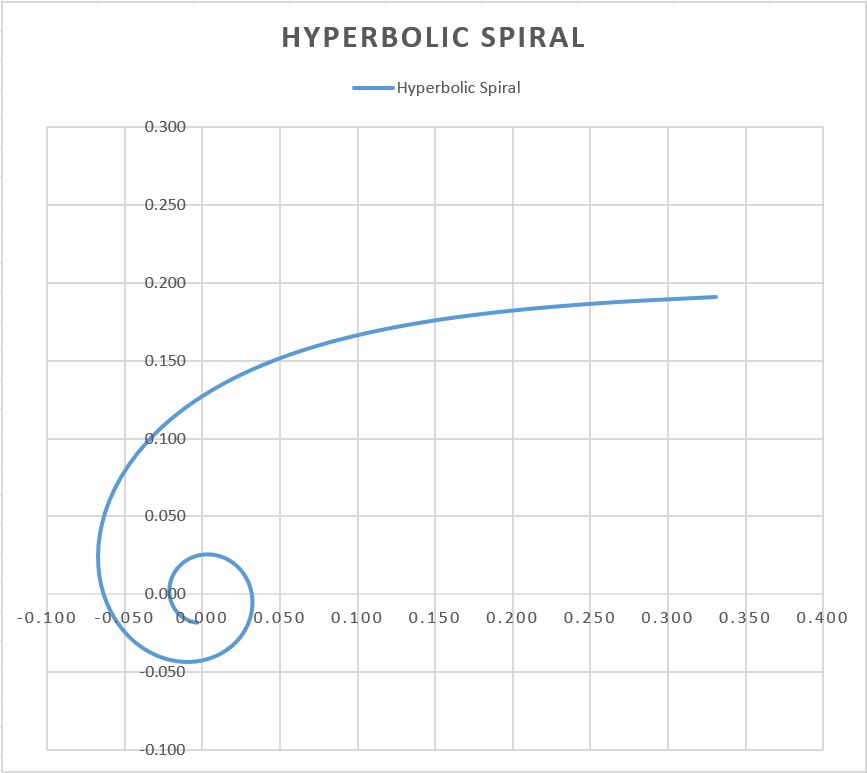
Ok, that looks quite interesting and is reminiscent of a horn profile. The function begins in the positive quadrant and always ends in the origin at zero. We now have to simply define an offset in order to start the profile from zero.
\tag{3a} x_{\text{off}} = \dfrac{a}{\phi_0} \cdot \cos(\phi_0)
\tag{3b} y_{\text{off}} = a-\dfrac{a}{\phi_0} \cdot \sin(\phi_0)
Now things are getting really exciting:

If you haven’t clicked yet, here is the counterpart:
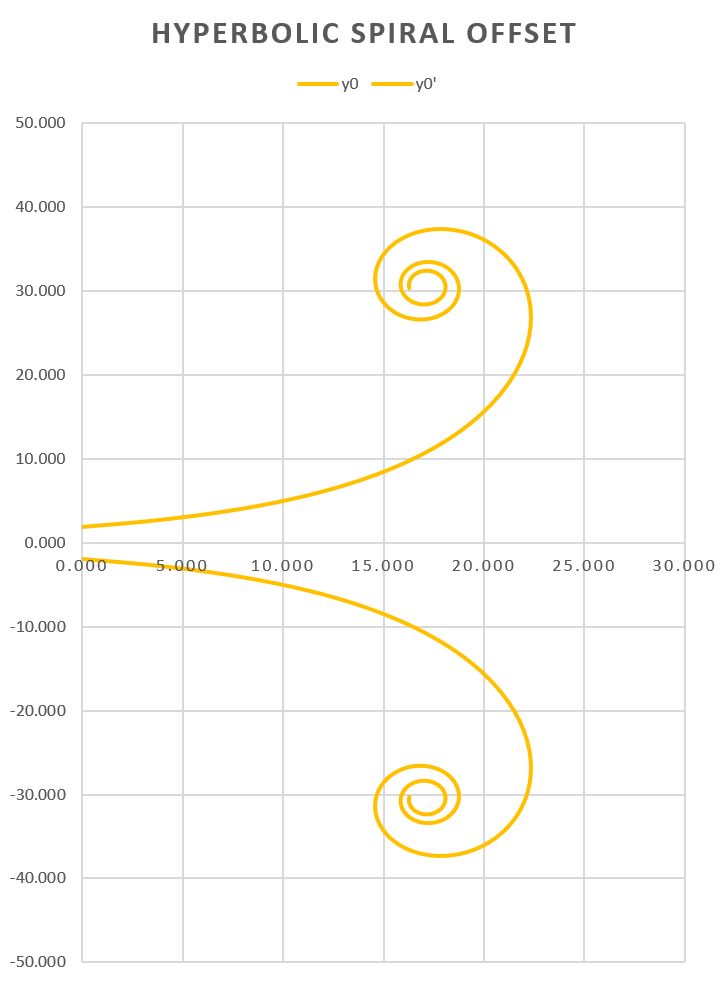
It is noteworthy that the angle for the maximum expansion of the profile is always the same (in radians and numerically rounded):
\tag{4}\phi_{max} = 2.79839
There are basically three options for parameter variations. The offset for the throat diameter, the base length a and the start angle for \phi. I extended my DrBA calculator to create point clouds for this horn type. The input parameters can be optimized with either regard to the horn length or the mouth diameter. I will shortly describe what is the procedure if optimizing for a target horn length which could be the quarter wave length of the intended cut-off frequency or anything else. First, we start with the given throat radius r_t. The corresponding base constant a can be calculated by choosing a reasonable start angle \phi_0
\tag{5}a = \dfrac{r_t}{1-\dfrac{1}{\phi_0}\cdot \sin(\phi_0)}
The length of the horn is now given by:
\tag{6}l = \dfrac{a}{\phi_0} \cdot \cos(\phi_0)-\dfrac{a}{\phi_{max}} \cdot \cos(\phi_0)
If we optimize for a quarter wave length as target horn length we need to find the corresponding start angle \phi_{0,\text{qwl}}. This can be done with a Newton optimization by minimizing the error function .
\tag{7}f_{\text{err}}=l_{\phi_0,\text{qwl}}-l_{\text{qwl}}
Once the start angle has been found it must be stepped until the desired termination conditions are reached.
Creating the point cloud is done with the same algorithm as already used for the other horn profiles.
DonVK created the corresponding ABEC3 simulation project. The results surprised us positively. The following results are based on a target cut-off frequency of 425Hz but do not take this exact number too serious as it is only an input parameter.

The radiation impedance is almost linear in the range presented here with a small peak around cut-off for the real and imaginary parts. Already this is an indication that the hyperbolic spiral should be a very good candidate as a template for a horn profile.
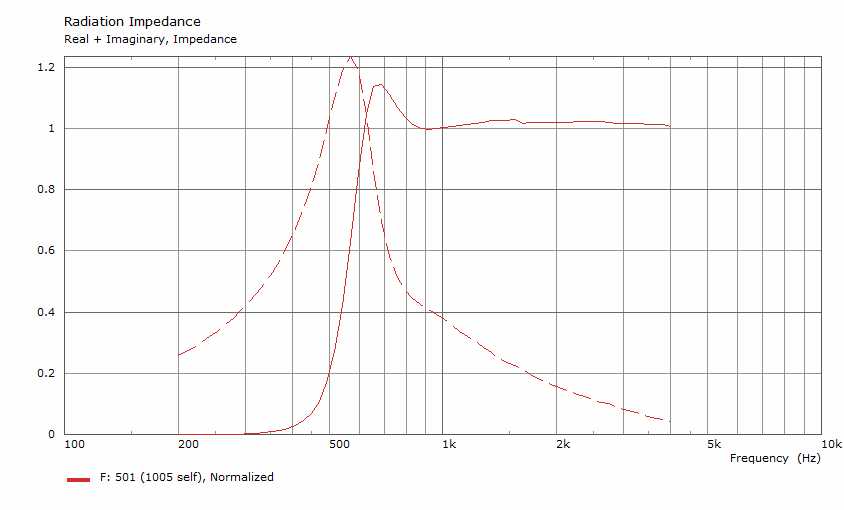
The Tractrix horn has a quite pronounced beaming towards higher frequency. I have not directly compared the beaming effects but it is also present for the hyperbolic spiral but the decay is very evenly:

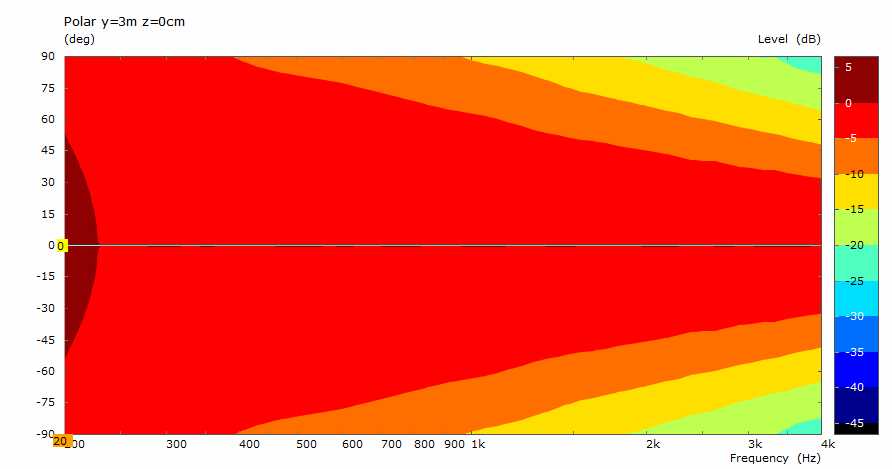
Looking at the following observation fields the hyperbolic spiral as base of a horn profile should have a natural sound character if someone can accept the beaming effects.
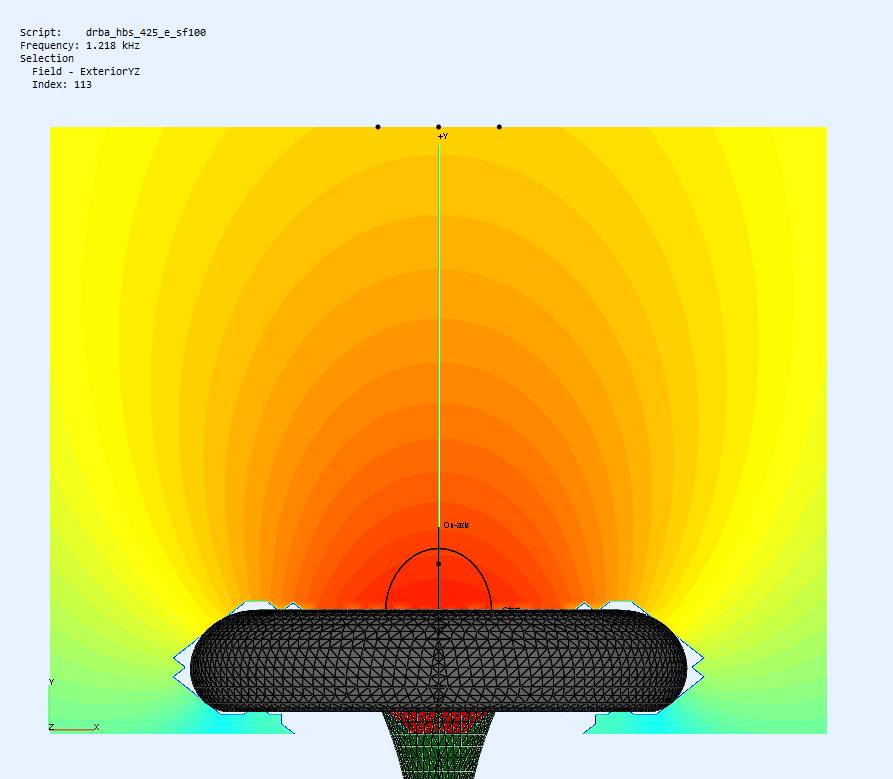
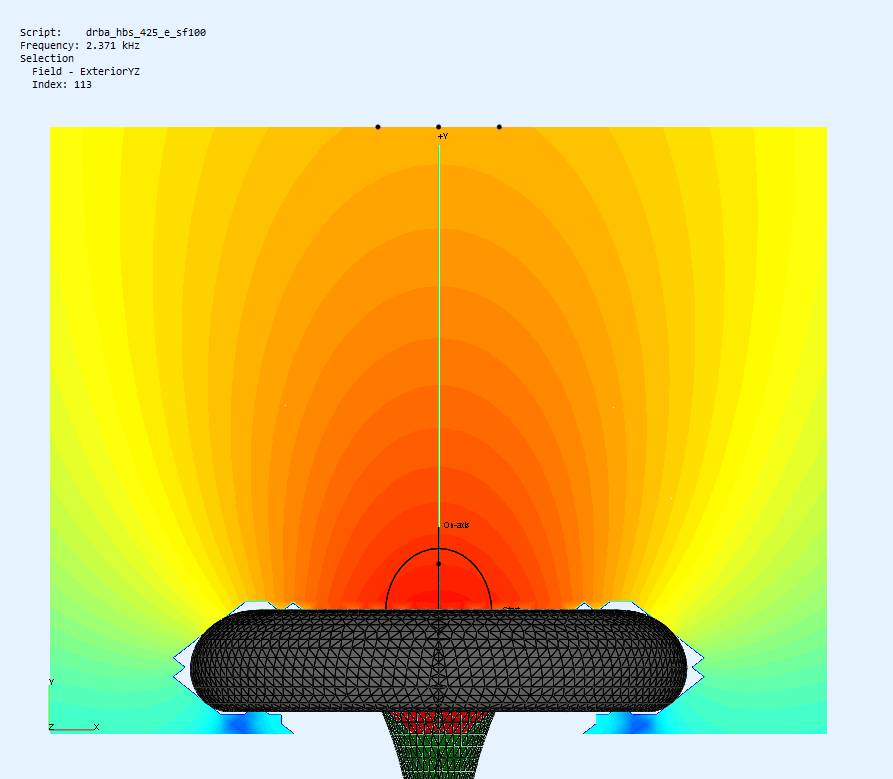
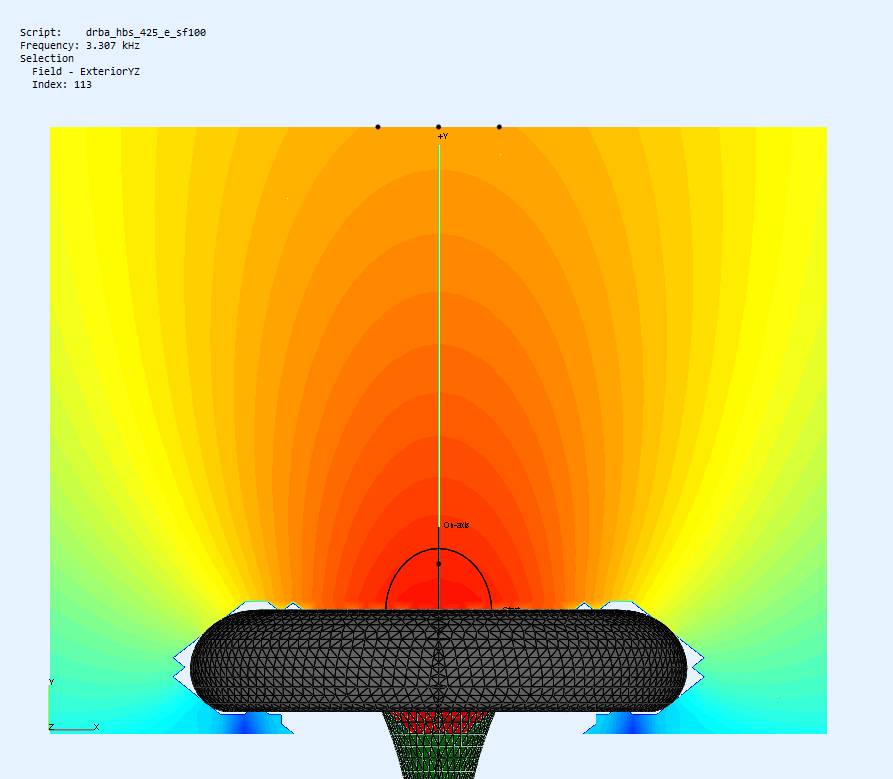
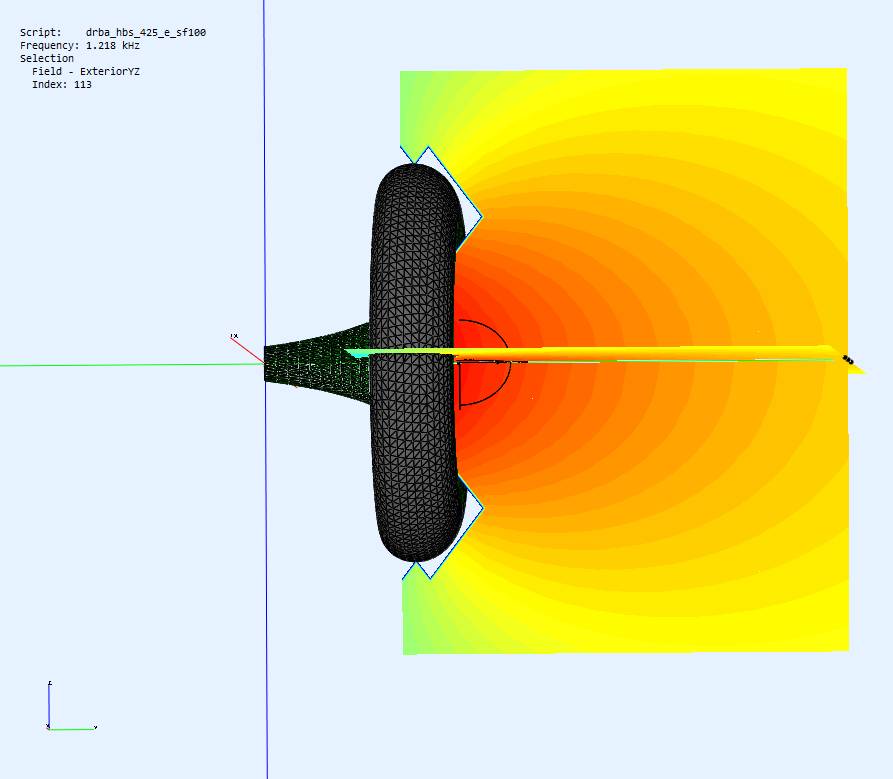
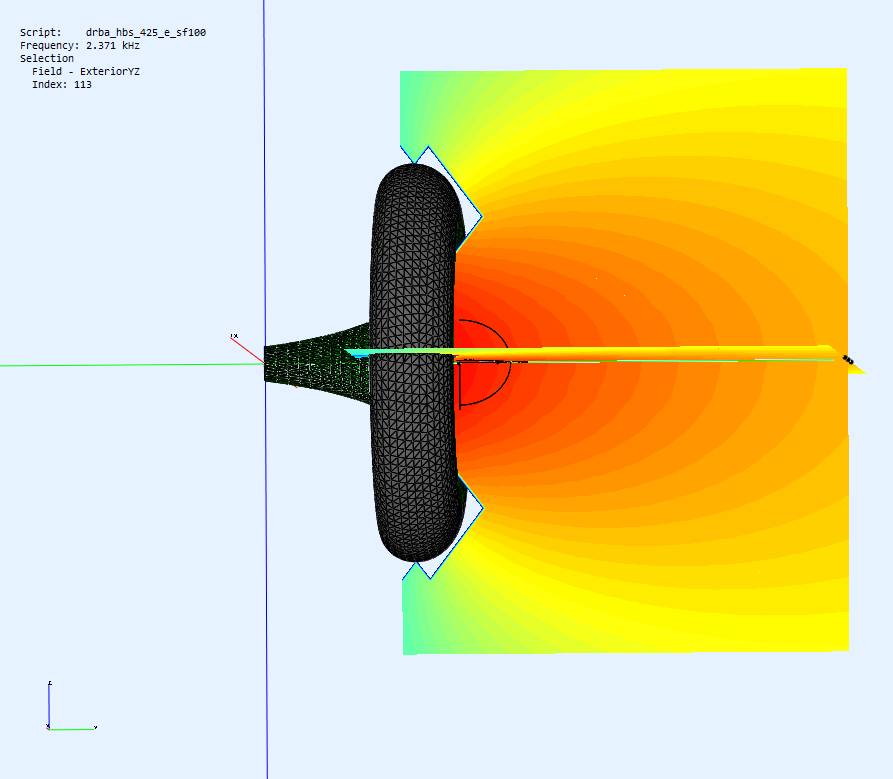
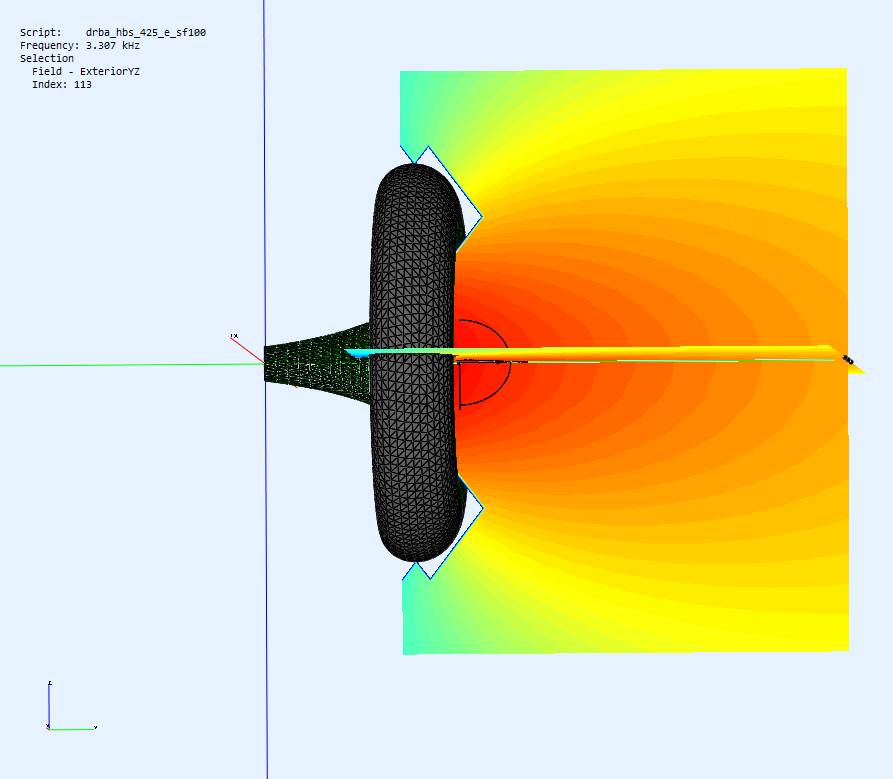 With regard to horns, spirals have the very interesting property that the profile runs towards one end and curls up. As a result, spirals more or less have a built-in roll-back of the profile and should also ensure a smooth termination of the impedance at the horn mouth.
With regard to horns, spirals have the very interesting property that the profile runs towards one end and curls up. As a result, spirals more or less have a built-in roll-back of the profile and should also ensure a smooth termination of the impedance at the horn mouth.
I have placed a spread sheet calculator for the hyperbolic spiral in the download section for those who want to play around with this horn profile. The source code is open. Please respect that commercial use is not allowed!
The next spirals in this article series will be the Sici and Cornu spirals.
